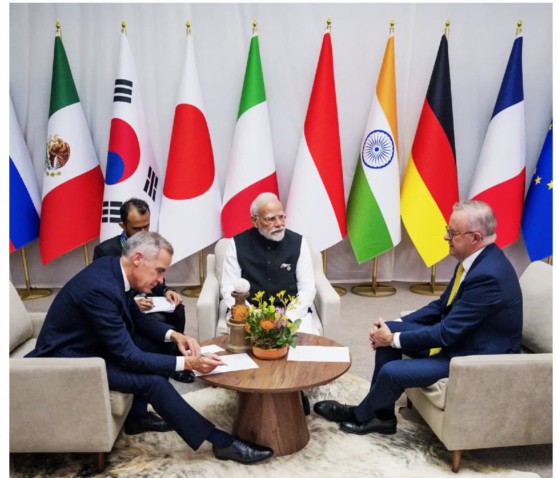India moves forward in developing K-6 missile
With a planned range of over 8,000 kilometres and the ability to carry multiple independently targetable reentry vehicles (MIRVs), the K-6 marks a bold leap in India’s strategic weapons programme, firmly placing the country among the few global powers with ultra-long-range hypersonic strike capabilities.
Developed by the Defence Research and Development Organisation (DRDO) and being readied for deployment on the future nuclear-powered ballistic missile submarines (SSBNs) of the Indian Navy, the K-6 represents not just technological advancement, but a powerful symbol of strategic maturity and self-reliance.
A technological triumph
The K-6 missile is being designed with cutting-edge propulsion and guidance systems that allow it to fly at hypersonic speeds — more than five times the speed of sound — and remain highly manoeuvrable through its flight path.
This gives it not only speed and reach but also the ability to avoid interception from current-generation missile defence systems.
The missile’s MIRV capability — which allows it to carry and deploy multiple warheads to separate targets — represents a significant force multiplier.
This technical complexity and precision underscore India’s rising stature in the global missile development arena, positioning the country as a leader in high-end aerospace innovation.
Strategic independence and Atmanirbhar Bharat
The K-6 project is yet another shining example of India’s resolve to develop indigenous defence capabilities.
As part of the broader “Atmanirbhar Bharat” (Self-Reliant India) initiative, the DRDO and associated institutions have been committed to ensuring that India’s most critical defence assets are developed and produced domestically.
From advanced composites for missile airframes to indigenous solid-fuel propulsion technologies, and from indigenous inertial navigation systems to cutting-edge MIRV tech, the K-6 showcases the best of Indian scientific and engineering talent.
Moreover, the missile project has created a ripple effect across India's defence ecosystem, fostering innovation among startups, boosting local manufacturing, and contributing to the growth of a self-sustaining defence-industrial base.
Indian scientists, engineers, and strategists are now working at the frontier of global military technology.
Navy’s new era
The development of the K-6 goes hand in hand with India’s naval expansion strategy.
With plans underway for constructing the next generation of SSBNs, including those with greater endurance and improved stealth, the K-6 is expected to be the principal strategic weapon aboard these vessels.
This alignment between platform and payload signifies a strategic integration that ensures not just the deployment of high-tech systems but their seamless incorporation into operational doctrine and mission planning.
With the induction of the K-6, the synergy between conventional maritime power and strategic capability will be complete.
Recommended
 World
World
India–Brazil–South Africa (IBSA) Dialogue Forum: An Assessment – Analysis
 World
World
India’s package for exporters signals confidence in Southeast Asia markets
 World
World
Japanese PM Sanae Takaichi and Indian PM Narendra Modi agree to deepen Japan-India cooperation
 World
World
Australia, Canada, India Enhance Cooperation in Technology
Popular article
 World
World
PM Modi underscores "shared commitment to global progress and prosperity" at G20 Leaders' Summit in Johannesburg
 World
World
Bridges beyond borders: India’s supports Nepal’s growth, tourism, and cricket dream
 World
World
Russia 'Actively Preparing' For Putin's India Visit: Kremlin
 World
World



